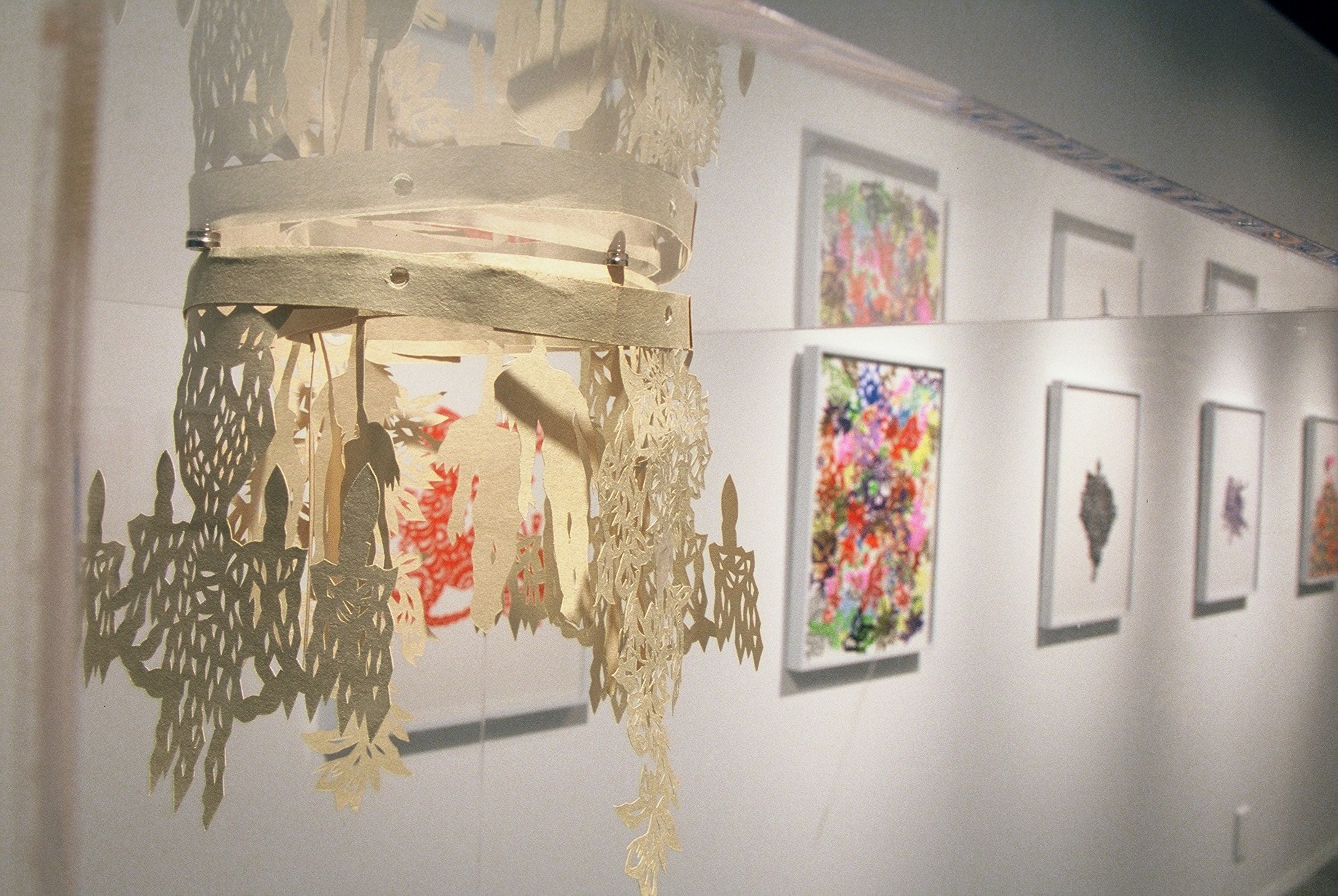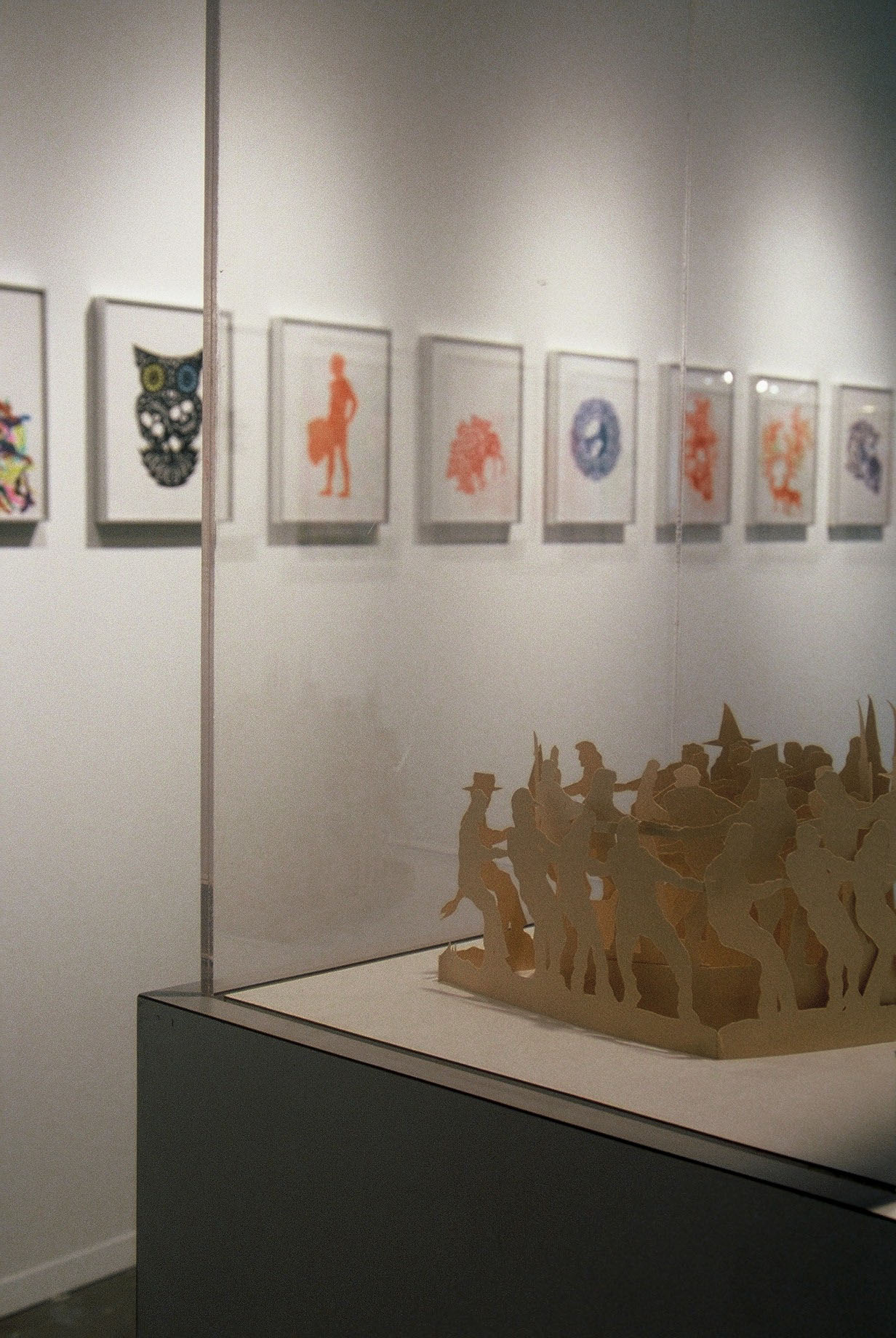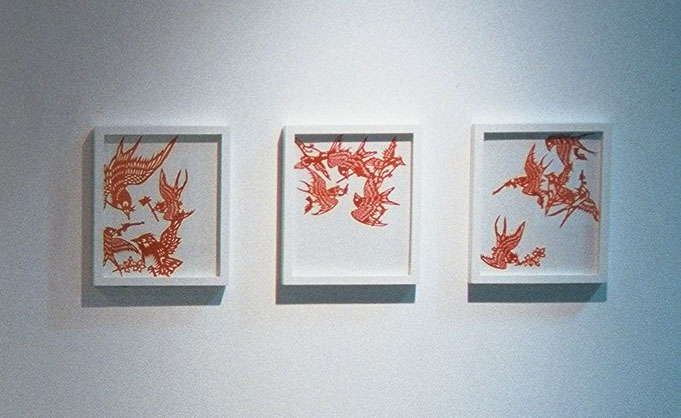
My Beautiful War
Paul Robles
July 27 - September 1, 2007








(Ir)rational Proofs, a response by J.J. Kegan McFadden
In an evolving series commenting on the contemporary political climate, Winnipeg-based artist Paul Robles offers My Beautiful War. Continuing his work in cut origami paper silhouettes and ornate placement with attention to detail, the artist further elaborates on his firm tongue-in-cheek stance towards all things sacred. Is Robles attempting to undermine the ever-present issue of war in our post-9/11 condition? Well into its fourth year of occupying Iraq, with widely-reported implications that Iran is next in line to have democracy bestowed upon them, the Bush-lead ‘war on terror’ is anything but funny - and yet at times seems nothing more than a terrible joke that just won’t end.
From micro to the macrocosms, Robles offers the mandala as a reflection of the cosmos, but in this context the intricate mimics the colourful airstreams produced in the night bombings of Baghdad. This relationship between the idyllic and atrocious is explored throughout Robles’ work: a beautiful oak tree is used for a group lynching; a host of swallows deliver labrys’; along with all the other implementations of utilitarian tools that have been turned into harbingers of violence.
At the heart of Robles’ war is his questioning of the male position in society. He presents images of men engaged in duels - a spoof on the old I’ll show you mine if you show me yours trick, or maybe it’s a pissing contest, or more likely still, a circle jerk - out to prove something or defend anything they can temporarily claim as theirs in victory. Such staged interactions between men in order to see who’s got the bigger _____ (cock, gun, idea, tank, territory, the list is endless really) are all shaped by Robles as simultaneously vain, pathetic, and beautiful. What the artist is articulating is the inane perversion of battle which alternatively abhors and seduces so often for the same reasons. To this end, he presents the few full body silhouettes of men with creatures emerging from their loins: ram’s heads, snakes, and so on. Is Robles’ suggesting it may be natural - this proclivity for violence; this disorder where half of the world is engaged in conflict over land, love, religion, oil?
The most recent aspects of this series involve a reconsideration of Canadian icons Robles, originally from the Philippines, interprets curious creatures native to Canada such as the beaver, alongside other imagined, more fanciful designs as evident in his cartoon-like wolf/boy, and satyresque horse/man. This jumbling of iconography is furthered with a stereotypical Fu Manchy character in peaked paper hat and spurs, wielding a six shooter, along with the placement of a rodeo cowboy atop a dragon. We begin to expect a samurai warrior riding a bucking bronco.
This all adds up to a local-meets-global phenomenological experience. We find our way through these images, just as we’ve managed to navigate all the headlines announcing the latest invasion, or tallied body count, or prisoner (pardon me, “detainee”) debacle. We wonder about the origins of borders, myths, and war... or whether in Robles’ mélange of images mirroring globalization, such claims even matter anymore.
Biographies
Paul Robles studied visual arts at the University of Manitoba (BFA, 1996) and Sociology at the University of Winnipeg (BA, 1992). In 2006, his work was included in the Winnipeg Art Gallery’s supernovas exhibition; as a large-scale paper-cut installation at Plug In, ICA; and the exhibition, Dialogue: the Changing Face of Canadian Contemporary Art at Rideau Hall in Ottawa. His work is also subject of a CBC ArtSpots - Artist profile which may be viewed online at www.cbc.ca/artspots. Robles recently returned from a month - long research and residency in People's Republic of China.
J.J. Kegan McFadden holds a Bachelor’s Degree (Honours) in Art History from the University of Winnipeg and a Master’s Degree in Critical & Curatorial Studies from the Department of Art History, Visual Art & Theory at the University of British Columbia. A cultural worker whose practice comprises curating, writing, and publishing; McFadden has contributed texts to various projects with aceartince., Plug In ICA, PLATFORM: centre for photographic + digital arts, The Morris & Helen Belkin Art Gallery, The Belkin Satellite, STORAGE, and Helen Pitt Gallery. For the most part he writes about art and love from his home in Winnipeg.
